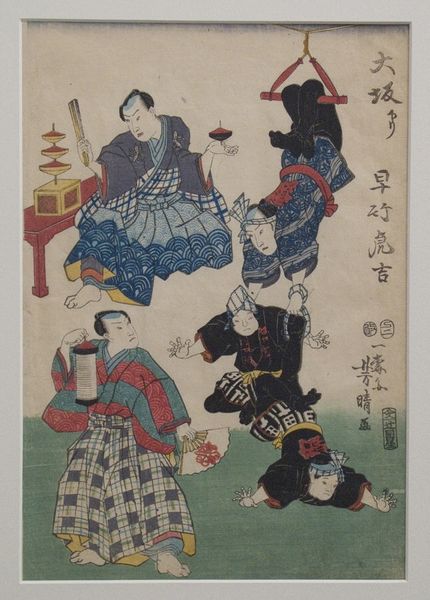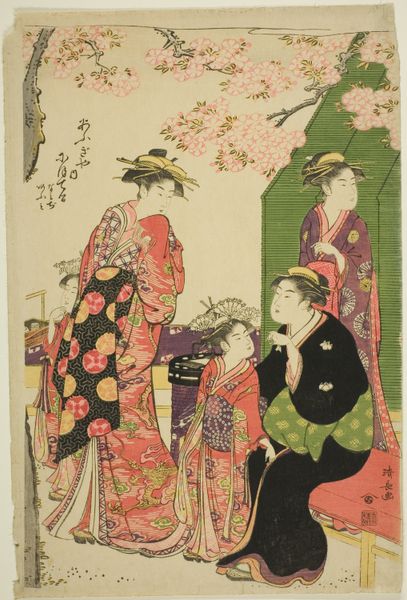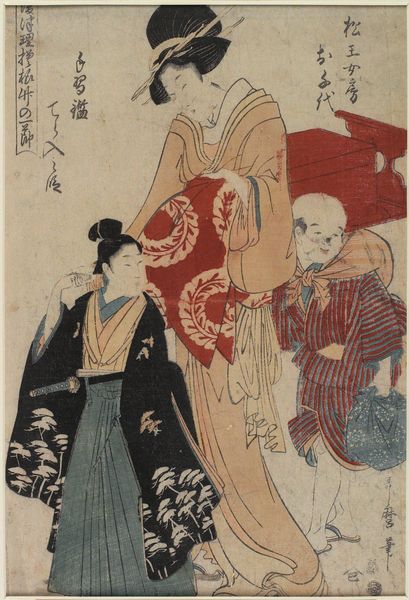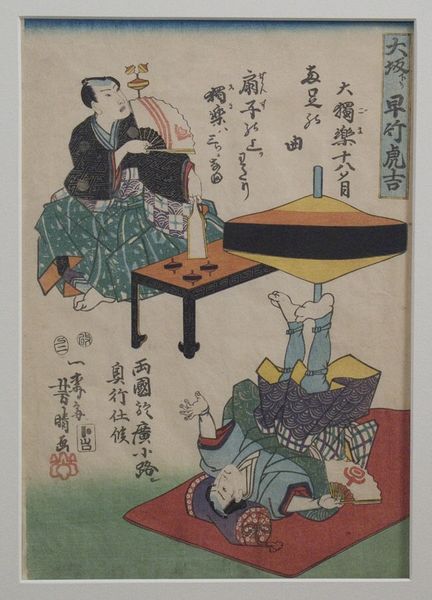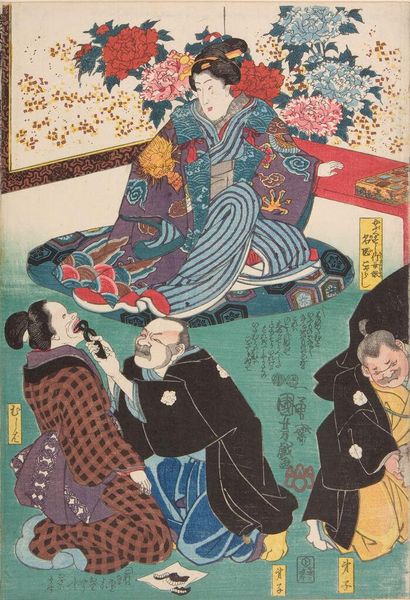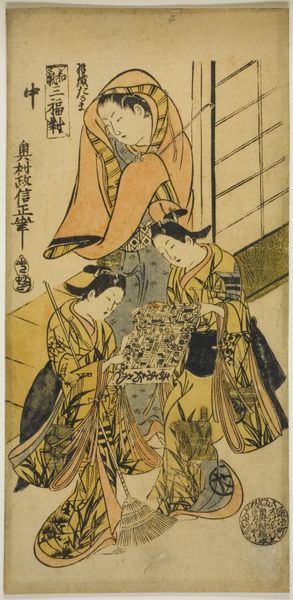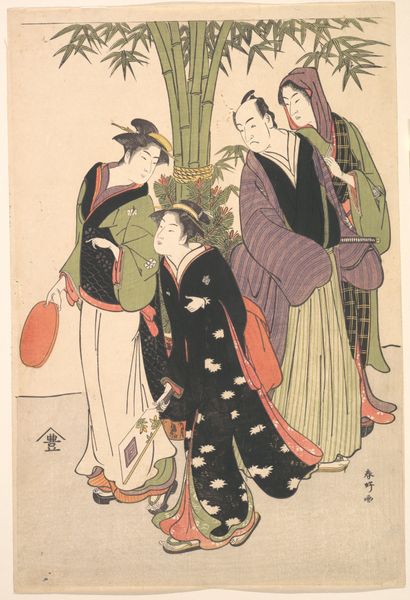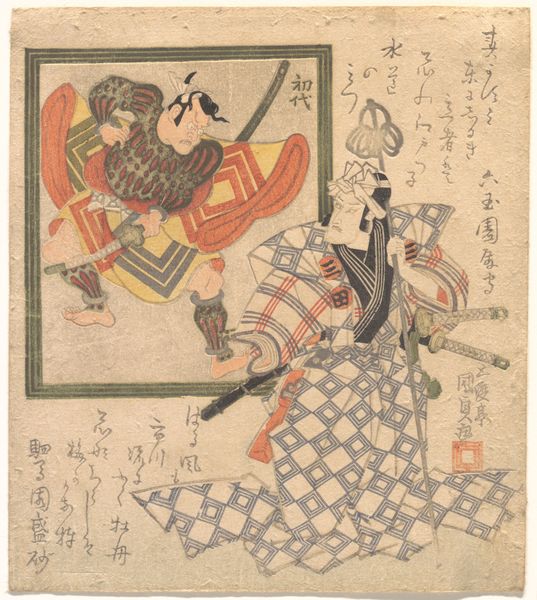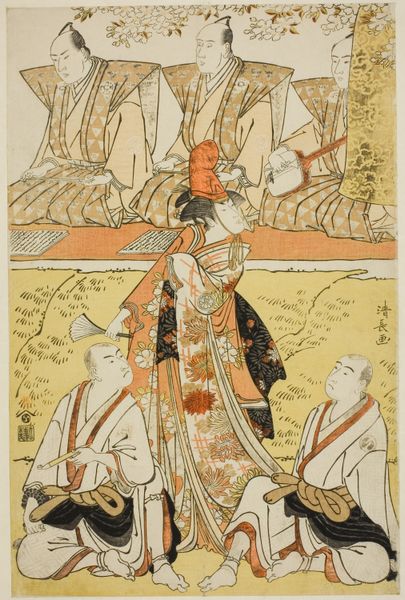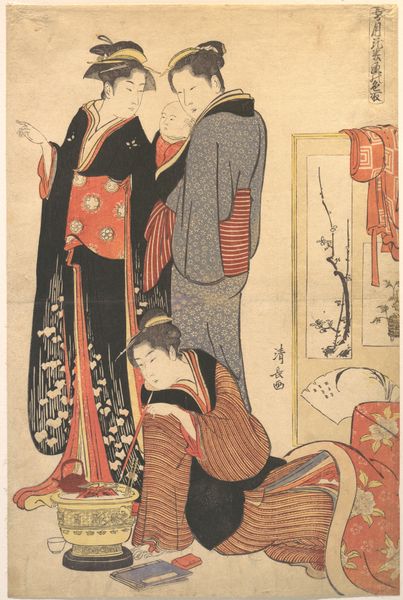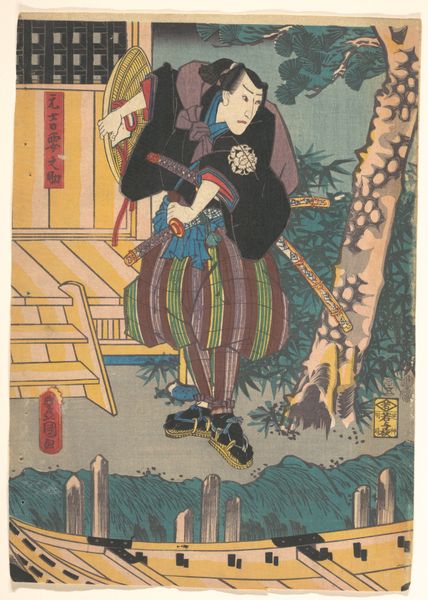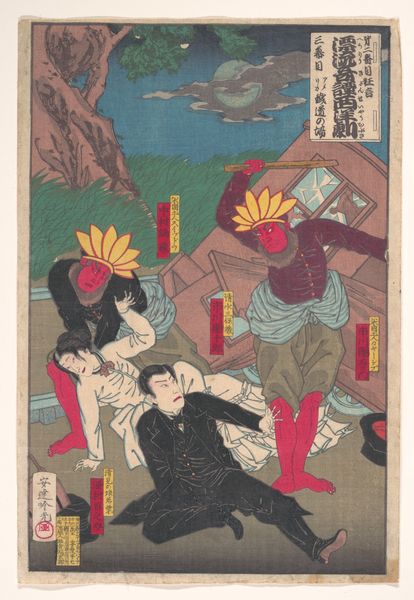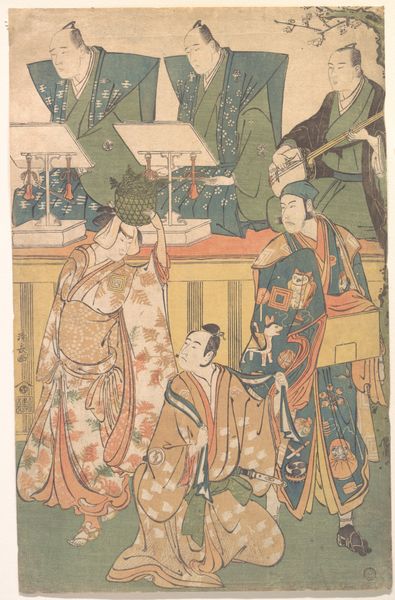
Acrobats Beneath Cherry Trees: Spinning Tops and Balancing 1857
0:00
0:00
painting, print, woodblock-print
#
portrait
#
tree
#
painting
# print
#
asian-art
#
ukiyo-e
#
figuration
#
woodblock-print
#
men
#
genre-painting
Dimensions: 14 1/4 x 10 in. (36.2 x 25.4 cm)
Copyright: Public Domain
Editor: This is "Acrobats Beneath Cherry Trees: Spinning Tops and Balancing," a woodblock print by Utagawa Yoshiharu from 1857, currently at the Met. It strikes me as incredibly dynamic; the figures are positioned in such unexpected ways! What draws your eye in this piece? Curator: I see a powerful commentary on Edo society cleverly veiled beneath this vibrant scene. Look closely; the seemingly joyous performance is layered with social critique. Ukiyo-e, while celebrated for depicting the 'floating world' of pleasure, also functioned as a site for subtle resistance against rigid societal norms. Editor: Resistance? I hadn't considered that. What makes you say that? Curator: The acrobats themselves. Consider their position outside the established order. These performers, belonging to a lower social class, momentarily occupy the viewer's attention, even dominance. Notice how the print equalizes, or even inverts, hierarchical relationships by placing them "above" the cherry blossoms, a traditional symbol of the ruling samurai class. What's the significance of play within rigid societal hierarchies? Editor: I guess the playfulness could be a way to critique social structures. They are literally subverting expectations with their acrobatic movements! And I see how the artist uses their elevated position to give them agency. Curator: Precisely. Yoshiharu is subtly advocating for those often marginalized. This isn’t just about entertainment; it’s about who has the stage and what message they're conveying through their bodies. The choice of medium, the widely distributed woodblock print, amplifies the message by ensuring it reaches a wider audience across class lines. Editor: That makes me think about who *didn’t* have a voice in Edo society and how even simple art could give it to them. Thank you; I'll never look at Ukiyo-e the same way! Curator: It’s crucial to remember that even beauty can be a battleground for social justice. I'm so glad that, hopefully, the audience now can have a greater understanding.
Comments
No comments
Be the first to comment and join the conversation on the ultimate creative platform.
